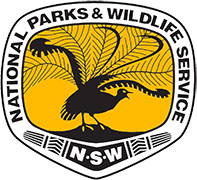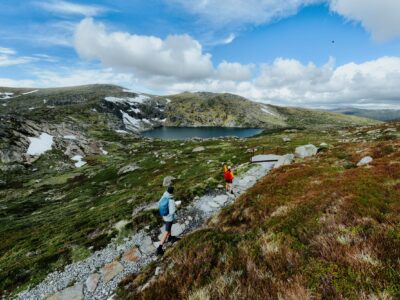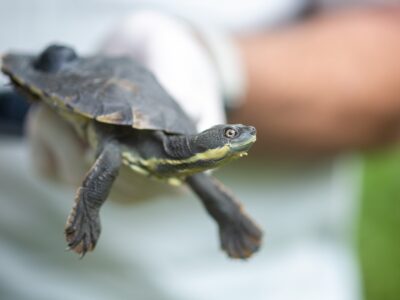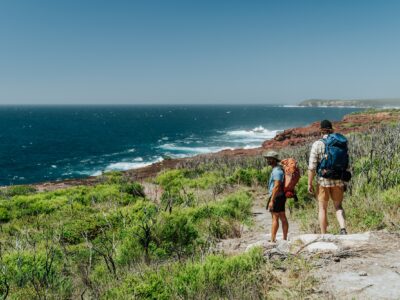From giant, hot-pink slugs to tiny striped frogs, the survival of some of Australia’s most iconic native species is under threat. Some of these critters are even specially protected because of their official ‘iconic’ conservation status under the NSW Government’s Saving our Species program, which recognises animals and plants that are culturally, ecologically and economically important to the community. The goal? To keep them safe, thriving and around for future generations as part of our target of zero extinctions in parks.
Without further ado, here are some of the most iconic threatened species that call our vibrant NSW national parks home, and the steps we are taking with our conservation partners to help them stay safe.
Look, don’t touch! As amazing as Aussie animals are, it’s important to respect them in their natural habitat. That means no feeding or disturbing wildlife. Keep your encounters safe and respectful.
-
1/7
Mount Kaputar pink slug: Our favourite party animal
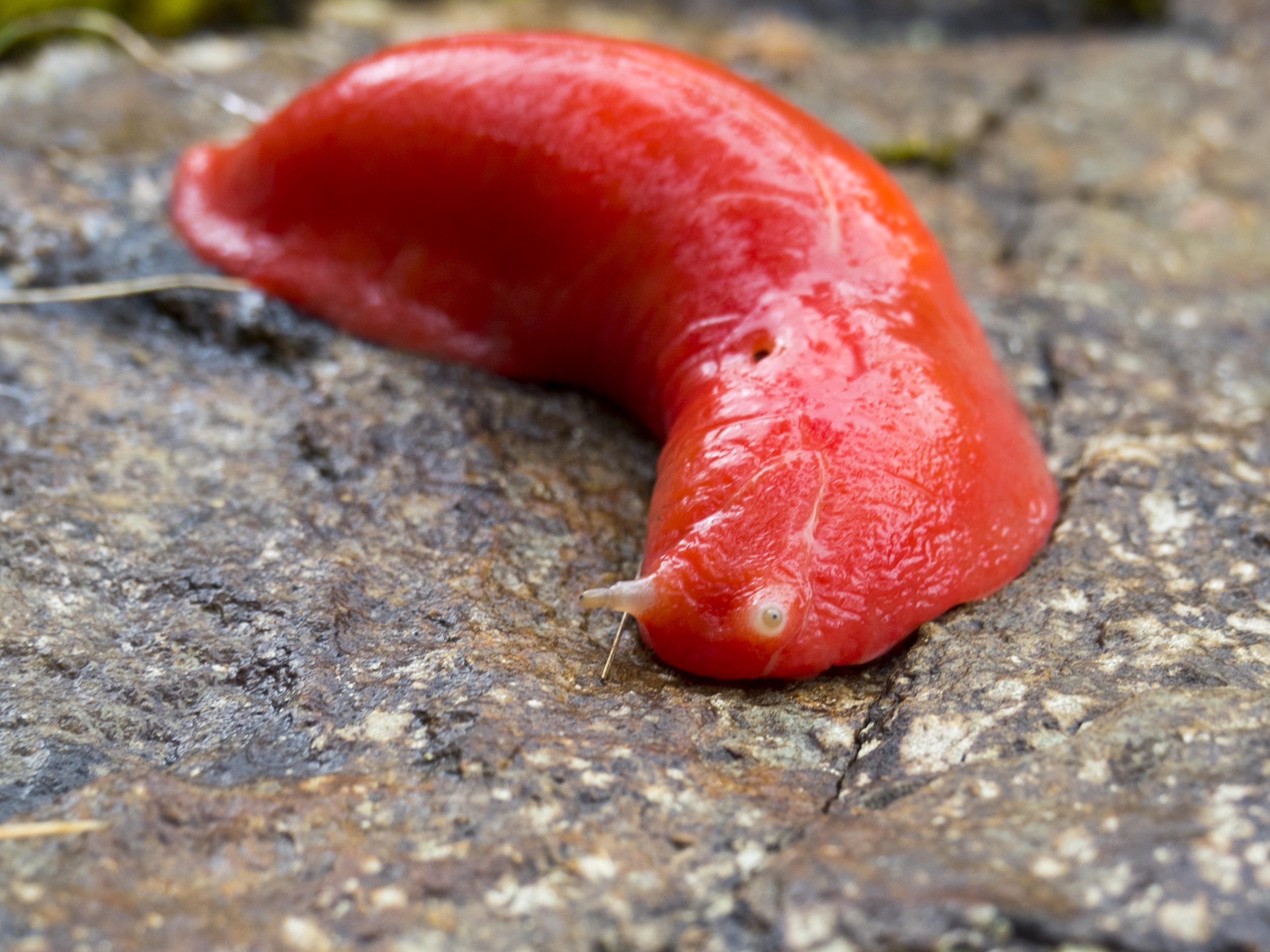 Photo Information
Photo InformationPretty in pink.
Leah Pippos/DCCEEW
A real-life neon icon, this pink slug is the hi-vis hero of Mount Kapatur National Park. It can grow up to 20cm long (yes, really!) and is a vibrant hot pink against the misty backdrop of the mountain forests. It spends its nights snacking on lichen and algae, and hides in the leaf litter by day.
Did you know? They’re usually spotted after rain, often gliding down trees and leaving behind scallop-shaped tracks.
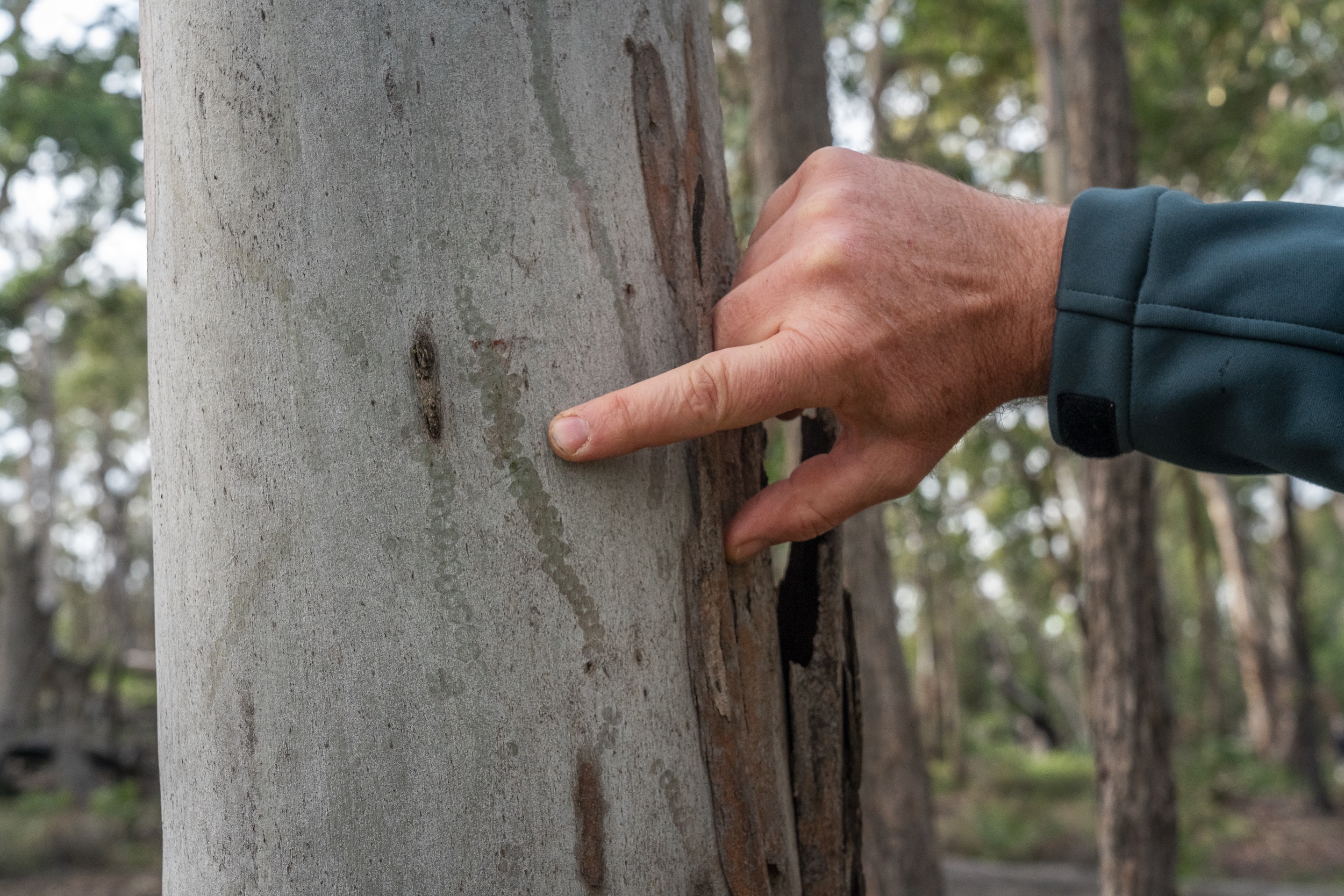 Photo Information
Photo InformationSlime trail – a sure sign that a slug was recently here.
John Spencer/DCCEEW
Why it matters: These slugs are part of a high-altitude community that supports many rare species, including 11 snails. This bright pink (and undeniably charismatic) friend is found absolutely nowhere else in the world!
Threats: Climate change is putting pressure on their cool, moist habitat and increasing the risk of fires. Feral animals, like goats and pigs, are also destroying their fragile surroundings.
How are we protecting the Mount Kaputar pink slug?
- NSW National Parks scientists are monitoring slug and snail populations as part of a broader effort to understand and protect the unique snail and slug communities in Mount Kaputar.
- Management of feral animals is ongoing across the reserve, and NSW National Parks is working with the NSW Rural Fire Service and neighbours to reduce the risk of frequent fires.
- You can get involved too! Public sightings are helping through the Slug Sleuth app, turning hikers into citizen scientists. If you’re visiting Mount Kaputar National Park and the Nandewar Ranges and are lucky enough to happen upon the pink slug, you can log your sightings to help us understand more about it.
-
2/7
Greater bilby: Our silky-eared soil turner
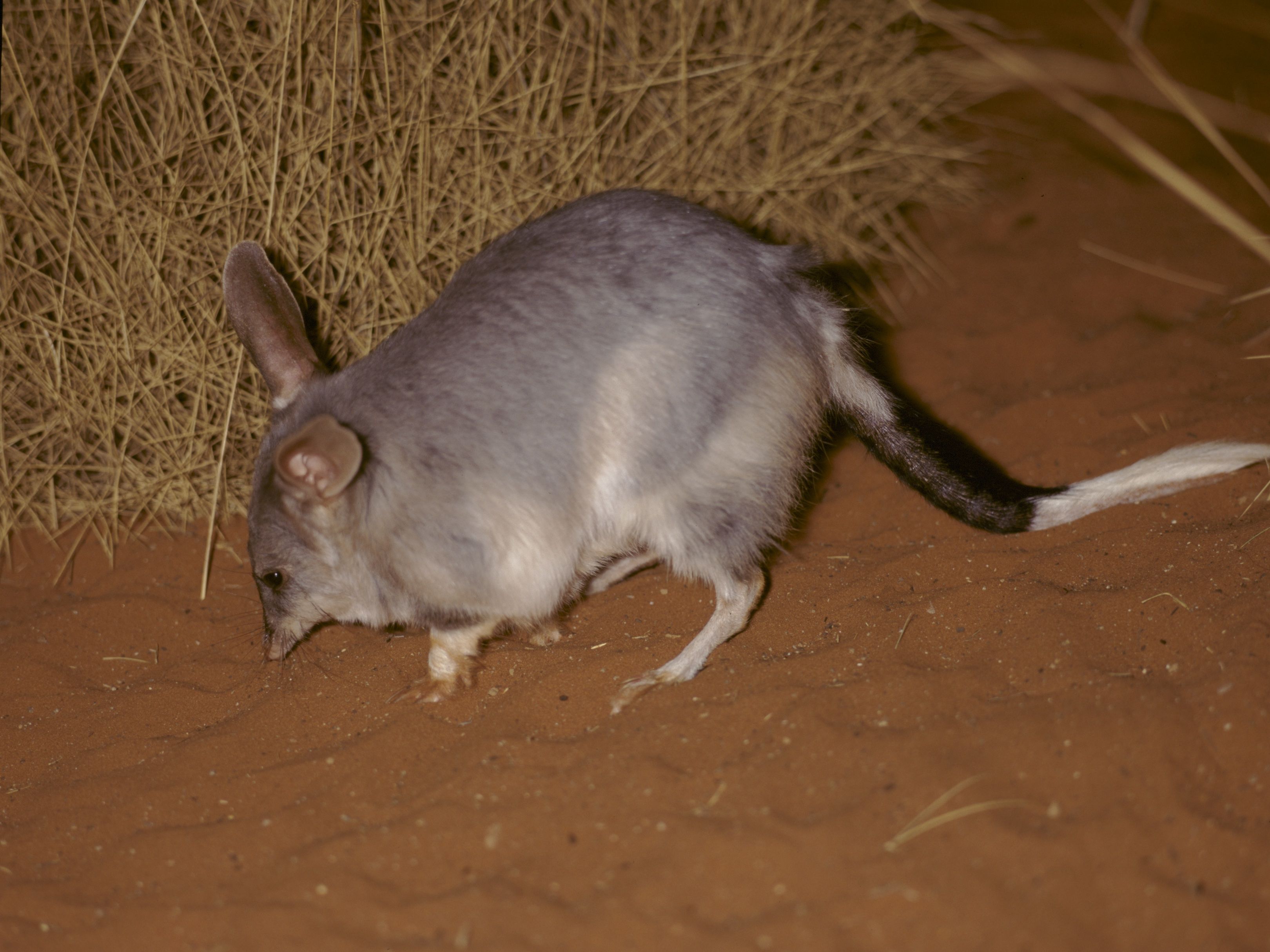 Photo Information
Photo InformationJust keep digging, digging, digging.
Ken Stepnell/DCCEEW
With its rabbit-like ears, silky fur and knack for digging, the bilby is a night-time soil-turning machine. These little desert engineers were once common in NSW, but now survive only in specially protected areas.
Did you know? Bilbies don’t need to drink water – they get all the moisture they need from their food.
Why it matters: Their digging improves soil health and helps native seeds to grow.
Threats: Predation by cats and foxes, habitat loss and competition with introduced species.
View this post on InstagramHow are we protecting the bilby?
- Bilbies are thriving again in purpose-built, predator-free exclosures at Sturt National Park, Pilliga State Conservation Area and Mallee Cliffs National Park.
- Ongoing monitoring and translocation programs are helping to re-establish populations in safe locations.
-
3/7
Wollemi pine: Our Jurassic giant
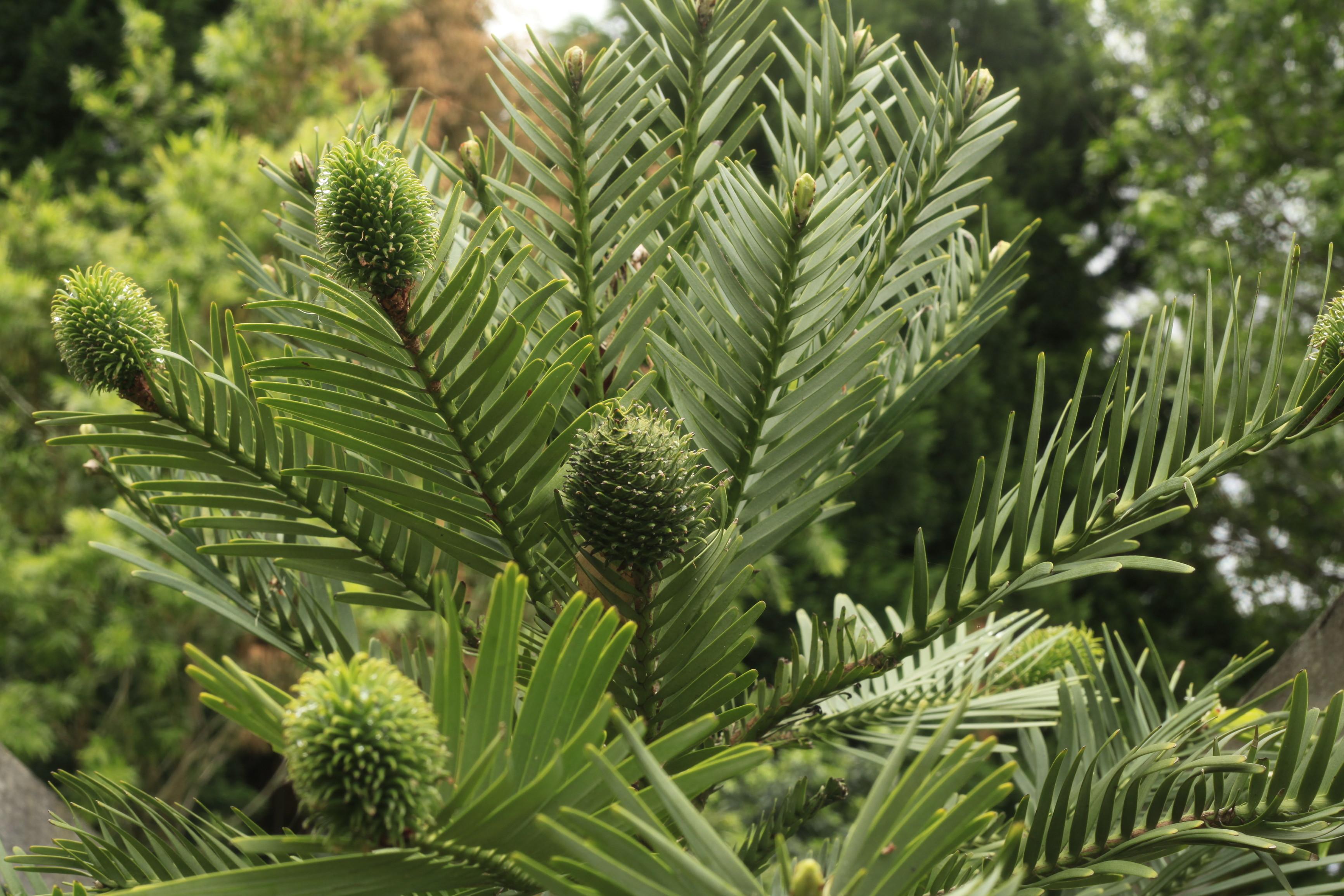 Photo Information
Photo InformationWollemi Pine (Wollemia nobilis).
Rosie Nicolai/DPIE (2014)
Meet the tree that time forgot. Thought to be extinct for over 90 million years, the Wollemi pine was rediscovered in a remote canyon in the 1990s. It’s now one of the rarest and most protected plants on Earth, with only 45 adult trees remaining in the wild.
Did you know? Wollemi pines can reproduce by dropping seeds and growing extra trunks from the same root system, a process called ‘self-coppicing’. Some wild pines have over 40 trunks and the oldest known trunk is more than 500 years old!
Why it matters: Belonging to a 200 million-year-old plant family, this critically endangered tree is a living fossil that offers a glimpse into prehistoric Australia.
Threats: Disease (especially Phytophthora root rot), unauthorised visits to its undisclosed location, pests, weeds and climate change, especially increased bushfire frequency and severity.
 Photo Information
Photo InformationWollemi Pine trees amongst other trees.
Jaime Plaza/Botanic Gardens Trust (2006)
How are we protecting the Wollemi pine?
- The wild population is extremely fragile, so it’s closed to the public to protect it from disease and disturbance. But there are plenty of other places to admire these prehistoric beauties – and you can even grow your own Wollemi pine at home!
- As part of our conservation strategy, we’re keeping a close eye on the trees’ wild habitat, researching and monitoring how the pines grow, and managing threats like fire, pests and weeds. We’re also keeping them safe through seed banking, moving them to new locations and growing trees in public gardens around the globe to reduce the risk of extinction.
-
4/7
Malleefowl: Our master mound builder
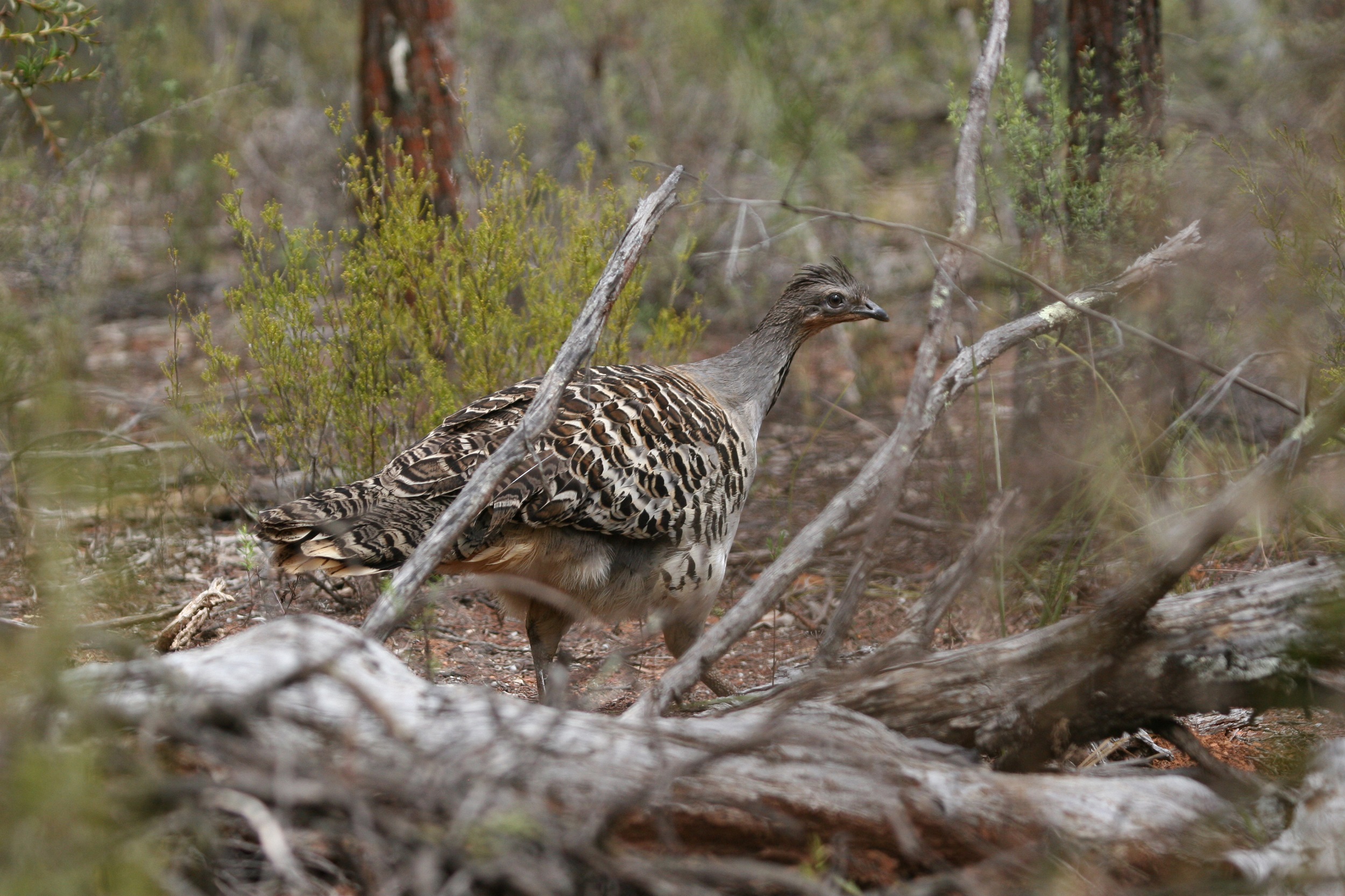 Photo Information
Photo InformationA malleefowl strutting its stuff.
Marc Irvin/DCCEEW
This big, shy bird uses its feet to build massive nest mounds that heat up and incubate its eggs naturally, making it an expert in eco-friendly incubation engineering!
Did you know? Along with the Australian brush turkey and the orange-footed scrubfowl, the malleefowl is one of only three mound-building bird species – or megapodes – in Australia.
Why it matters: They help recycle leaf litter and play an important role in maintaining healthy scrubland in inland areas.
Threats: Habitat destruction, predation by foxes and altered fire regimes.
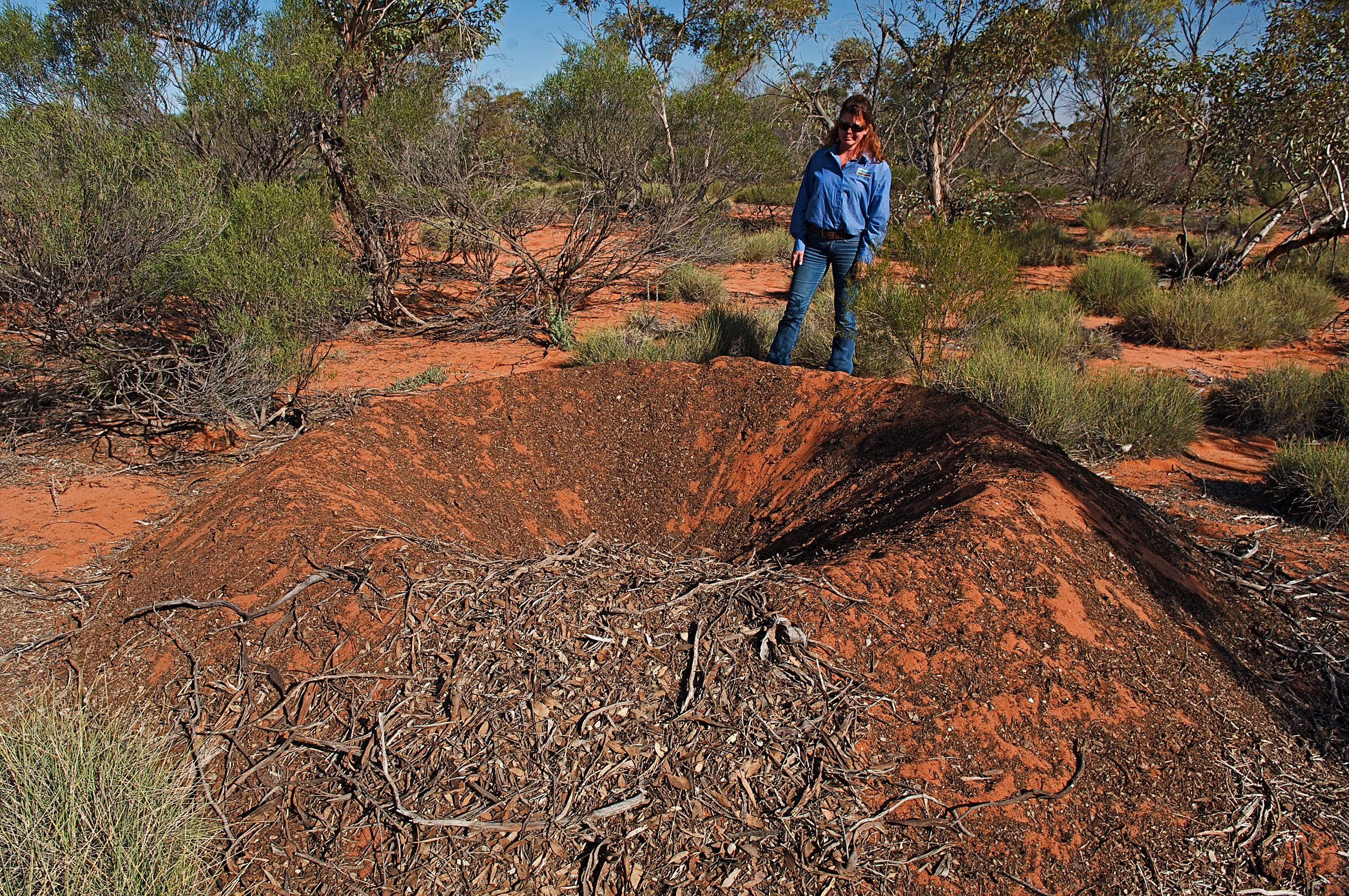 Photo Information
Photo InformationThat’s one impressive nest!
Stuart Cohen/DCCEEW
How are we protecting the malleefowl?
- NSW National Parks is working with Saving our Species and regional partners to monitor activity around the birds’ mounds and keep a careful eye on population health.
- Predator control and carefully planned fire regimes are helping support malleefowl habitats.
Malleefowl are among a group of Aussie birds with some serious romancing skills. From the lifelong bonds between cockatoos, penguins and owls, to the parental devotion of plains-wanderers and emus – find out more about Australia’s most romantic birds.
-
5/7
Brush-tailed rock-wallaby: Our cliff-top acrobat
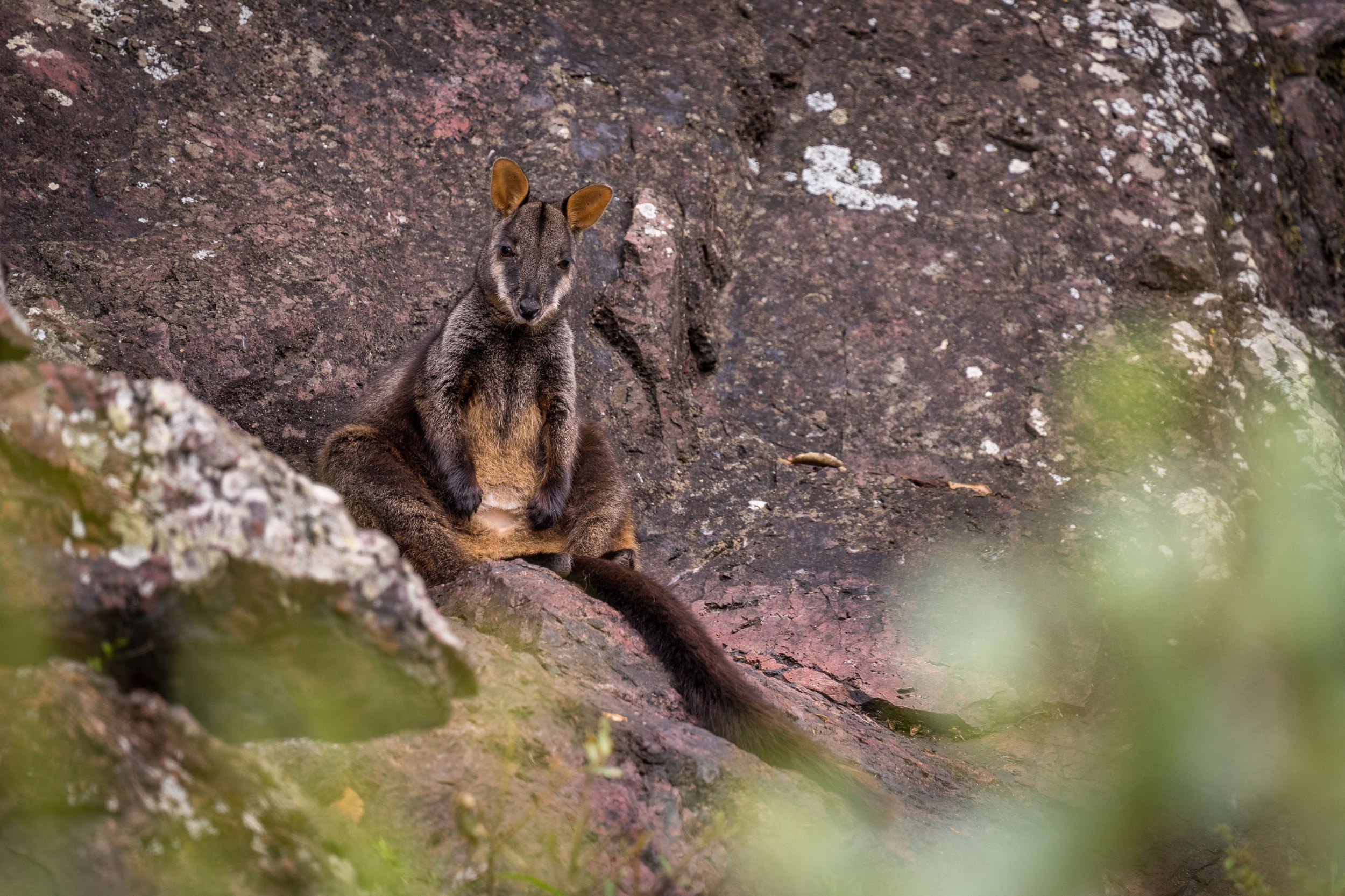 Photo Information
Photo InformationA local brush-tailed rock-wallaby popping out to say hi.
Green Gully Track
Oxley Wild Rivers National Park
DCCEEW
These furry acrobats are built for the cliffs. With strong legs and long bushy tails for balance, they nimbly leap across rocky ledges in areas like Warrumbungle and Oxley Wild Rivers national parks.
Did you know? Their feet have rough pads that provide them extra grip as they leap up seemingly vertical surfaces.
Why it matters: They’re part of a complex ecosystem in rugged, mountainous terrain.
Threats: Predation by introduced foxes and cats has seen this species disappear from large areas of NSW. This is often made worse by habitat fragmentation close to large towns and competition with feral goats.
View this post on InstagramHow are we protecting brush-tailed rock-wallabies?
- Working with landholders to control feral cats and red foxes in important brush-tailed rock-wallaby habitats.
- An extensive goat control program to reduce competition for food and shelter.
- Reintroduction programs are bringing them back to areas where they were once found.
- Predator-proof fences and weed control is helping to ensure they have safe and suitable places to thrive.
Your new favourite family-friendly reality show awaits! You can watch these agile creatures in their natural habitat from the comfort of your couch on our brush-tailed rock-wallaby cam.
-
6/7
Southern corroboree frog: Our best dressed amphibian
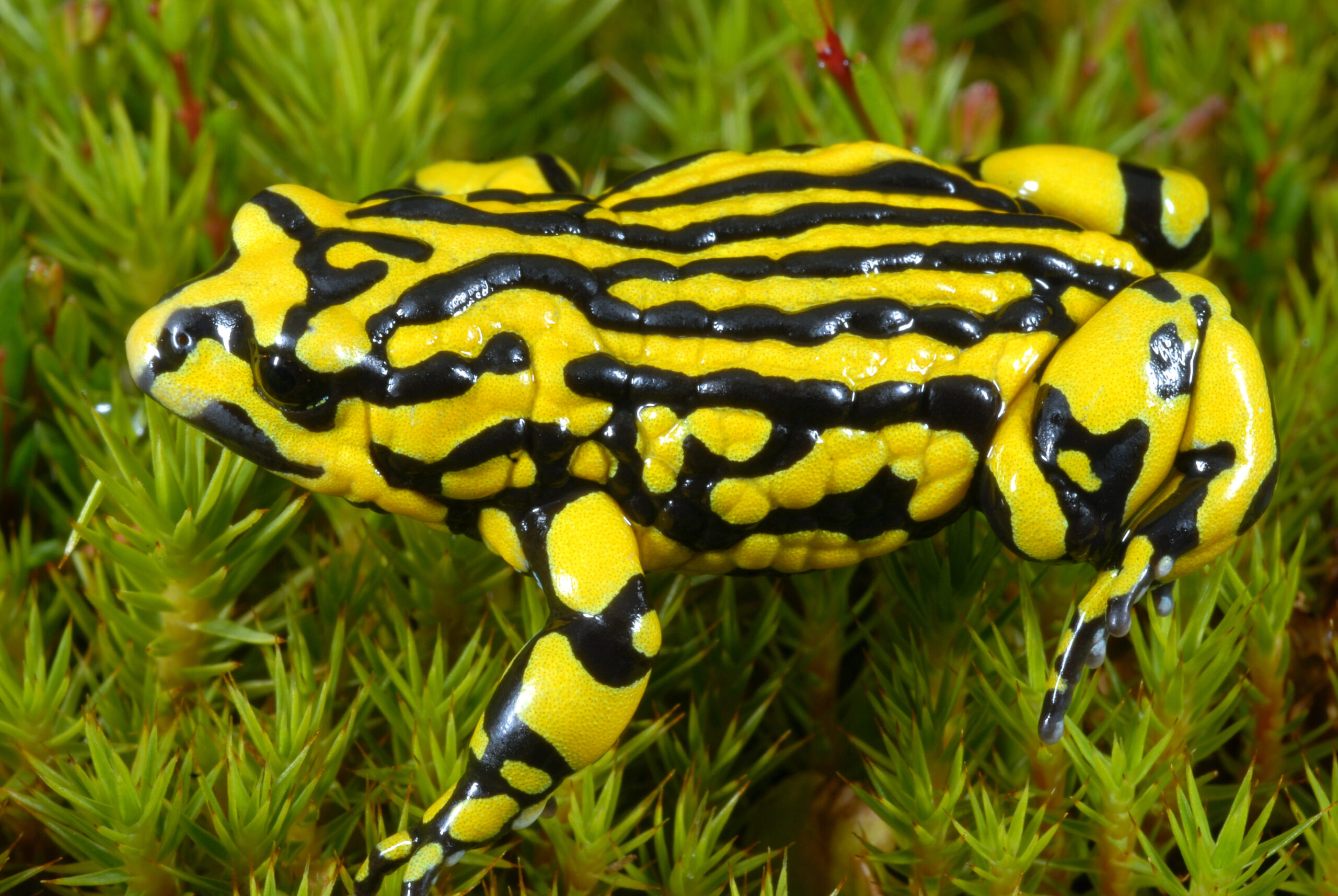 Photo Information
Photo InformationDress code: stripes.
David Hunter / DCCEEW
Tiny but striking, this black-and-yellow southern corroboree frog looks like it’s ready for a costume party. It lives in the alpine bogs of Kosciuszko National Park and is sadly one of Australia’s most endangered amphibians.
Did you know? These clever frogs produce their own natural antifreeze to survive snowy winters.
Why it matters: They’re an important indicator of environmental health in alpine regions.
Threats: The deadly chytrid amphibian fungus, climate change and habitat degradation.
How are we protecting southern corroboree frogs?
- We’re working hard to boost wild numbers of these frogs through captive breeding programs.
- Researchers are trialling safe, fungus-free habitats and carefully releasing frogs into the wild.
-
7/7
Plains-wanderer: Our genetically unique gem
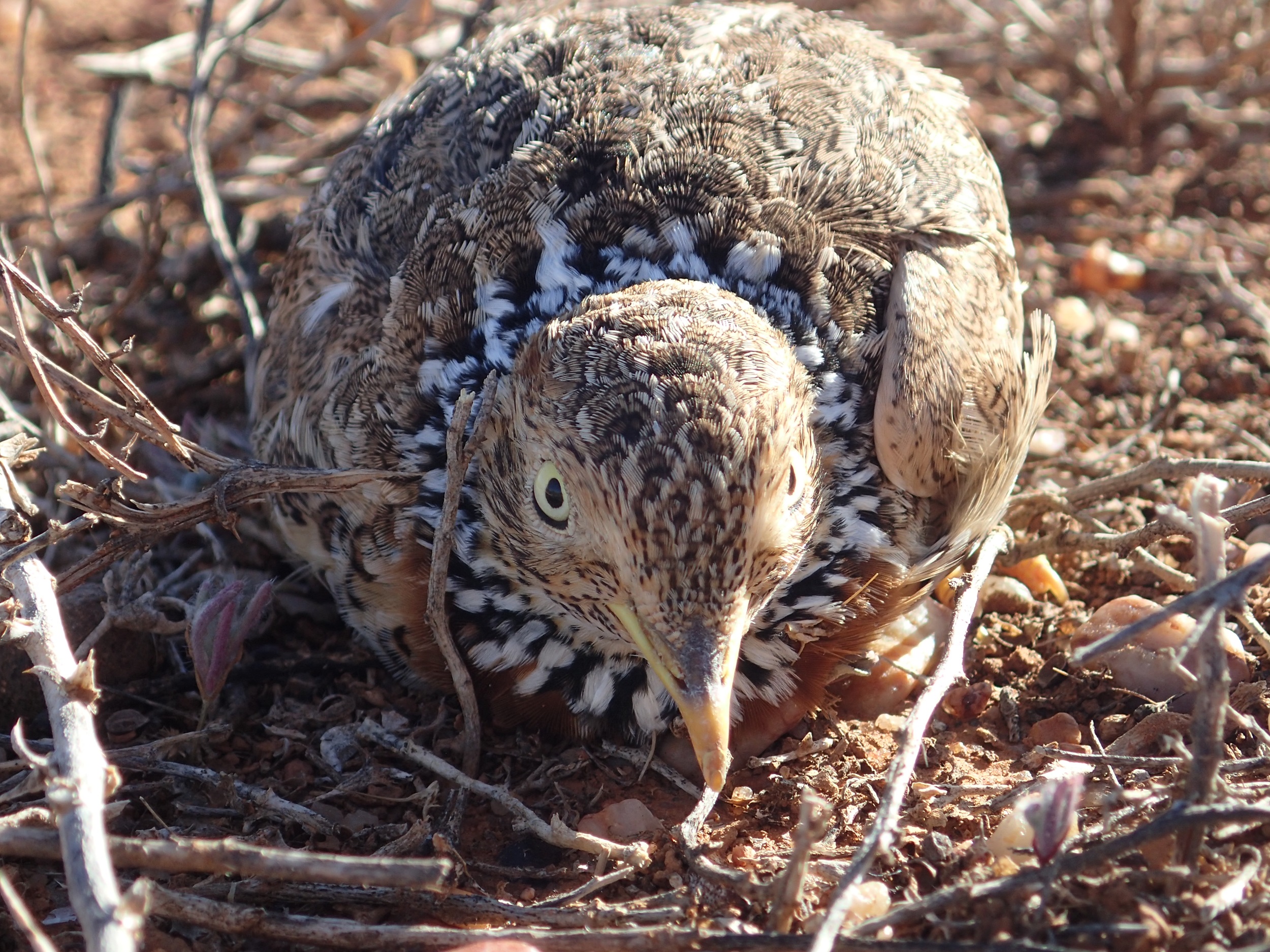 Photo Information
Photo InformationUniquely beautiful.
Andrea Tschirner/DCCEEW
This small, round bird may look like a quail, but it’s actually completely unique – with no close relatives in the bird world. Found in open native grasslands, the plains-wanderer is elusive and incredibly rare.
Did you know? In plains-wanderer families, the female is the boss – she lays the eggs and the male does all the parenting.
Why it matters: They are a critical species in grassland ecology and are genetically distinct.
Threats: Habitat loss, overgrazing, predation and changes in land use.
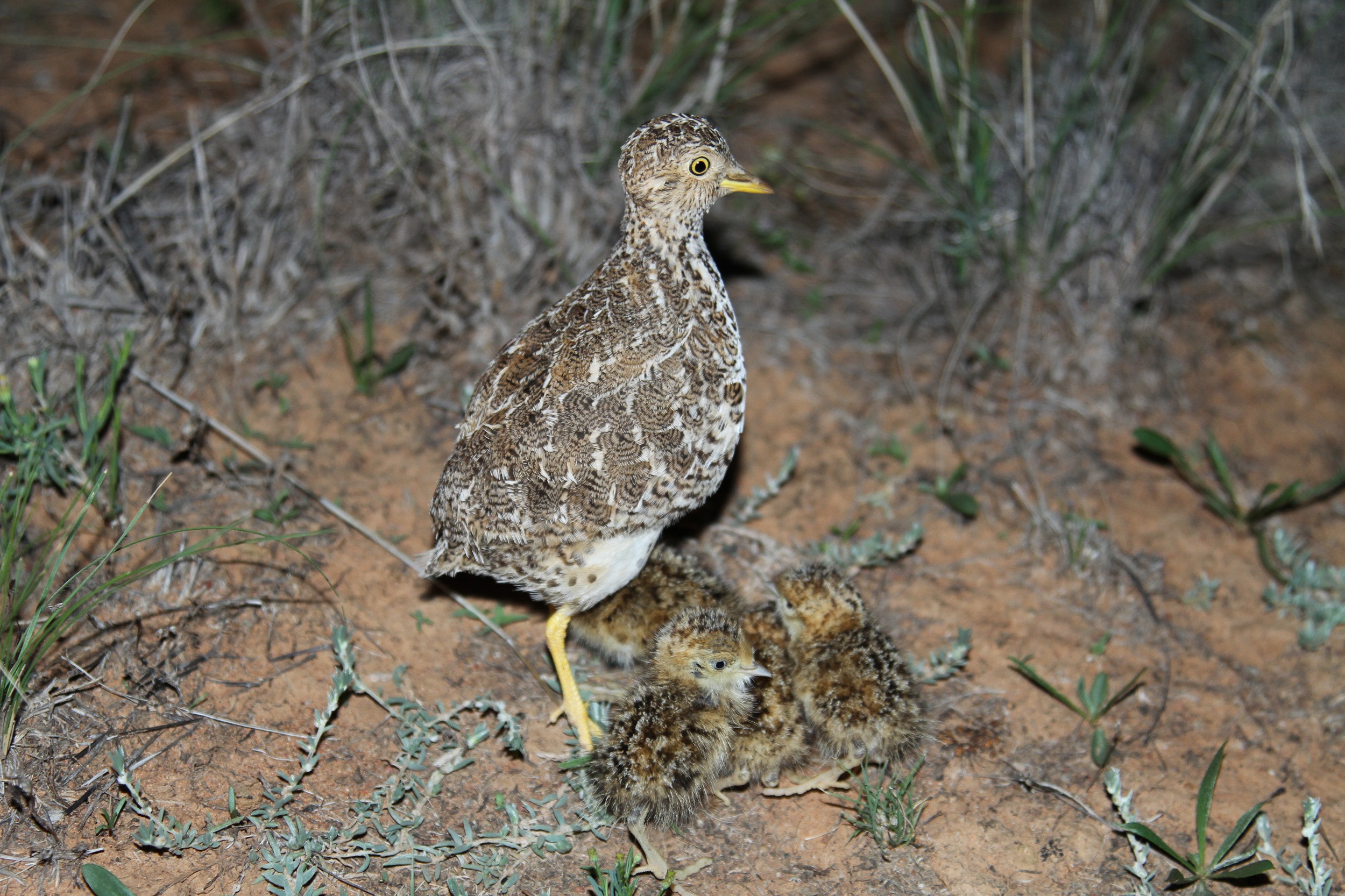 Photo Information
Photo InformationDaddy duties.
David Parker/DCCEEW
How are we protecting plains-wanderers?
- A national recovery plan is guiding conservation efforts across the areas where the birds are found.
- The Saving our Species program is aimed at securing their native grassland homes.
- A conservation breeding program is raising chicks to be released into the wild, in managed habitat.
What you can do to help
You don’t need to be a scientist or park ranger to make a difference to the future of these humble heroes. Here’s how everyday nature lovers can pitch in:
- Leave no trace: stick to paths, take your rubbish with you and never feed wildlife.
- Get involved: there are plenty of conservation citizen science programs available, where you can contribute valuable data.
- Support conservation: whether it’s volunteering or simply spreading the word, every action counts.
- Learn more: the more you know about conservation, the more you’ll care. Read more about the Saving our Species program and discover how NSW National Parks is helping protect our state’s most at-risk wildlife.
Because whether it’s a pink slug, a prehistoric tree or a grassland-loving bird, every species has a role to play, and a story worth saving.
Did you know? Many of the species listed here are considered of such exceptional natural or cultural value that their habitat has been declared as an ‘asset of intergenerational significance‘. These areas have increased legal protections that support the conservation of some of our most precious plants and animals.
